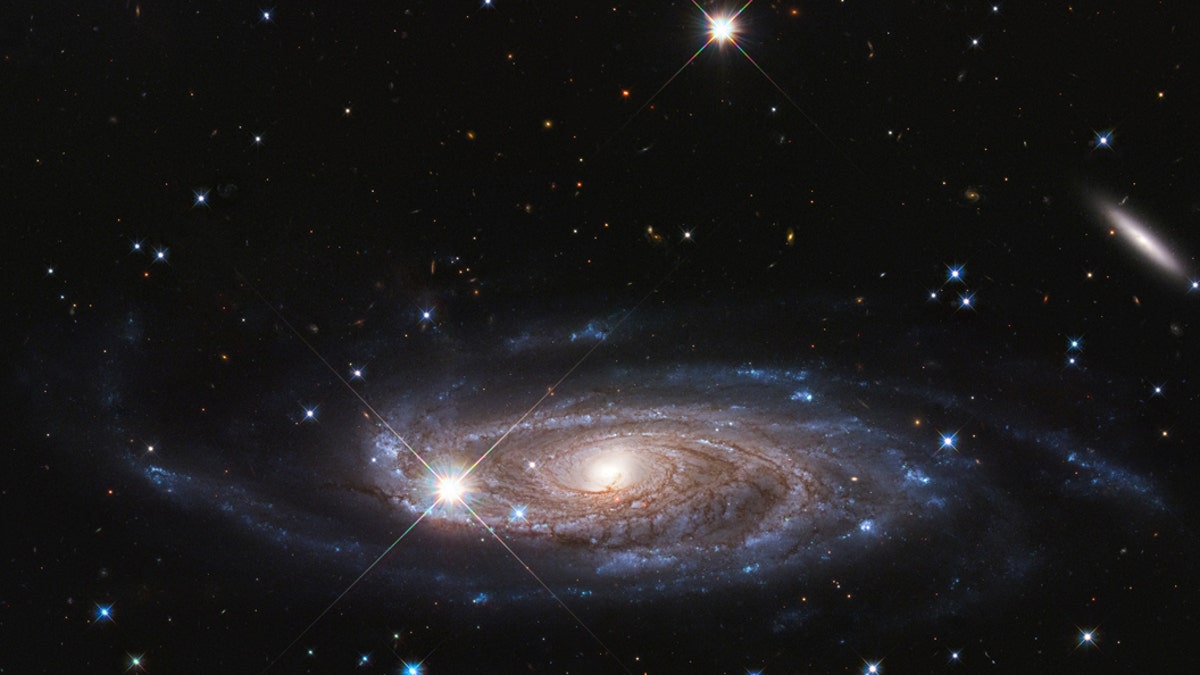Fox News Flash top headlines for Jan. 7
Fox News Flash top headlines for Jan. 7 are here. Check out what's clicking on Foxnews.com
The "king of the monsters" has been found in deep space.
NASA's Hubble Space Telescope has discovered a massive galaxy known as UGC 285, 232 million light-years from Earth, that could be nicknamed the "Godzilla galaxy" due to its massive size.
It is 2.5 times wider than the Milky Way galaxy and contains nearly 10 times the number of stars, according to a statement released by the space agency.
It has been nicknamed "Rubin’s galaxy," after astronomer Vera Rubin, according to the University of Louisville astronomer Benne Holwerda, who observed the galaxy using the Hubble.

This Hubble Space Telescope photograph showcases the majestic spiral galaxy UGC 2885, located 232 million light-years away in the northern constellation Perseus. The galaxy is 2.5 times wider than our Milky Way and contains 10 times as many stars. A number of foreground stars in our Milky Way can be seen in the image, identified by their diffraction spikes. The brightest star photobombs the galaxy's disk. (Credit: NASA, ESA and B. Holwerda (University of Louisville))
NASA’S HUBBLE SPACE TELESCOPE CAPTURES STUNNING GALAXY IMAGE
"My research was in a large part inspired by Vera Rubin's work in 1980 on the size of this galaxy," said Benne Holwerda in the statement, adding that Rubin measured the galaxy's rotation, giving evidence that dark matter exists. "We consider this a commemorative image. This goal to cite Dr. Rubin in our observation was very much part of our original Hubble proposal."
Described as a "gentle giant" by NASA, the galaxy, which is located in the Perseus constellation, "looks like it has been sitting quietly over billions of years, possibly sipping hydrogen from the filamentary structure of intergalactic space," according to the space agency.
‘GHOST’ IN SPACE: NASA’S HUBBLE TELESCOPE CAPTURES STUNNING NEBULA PIC
It's unclear at the moment how it got so big, Holwerda added.
"How it got so big is something we don't quite know yet. It's as big as you can make a disk galaxy without hitting anything else in space."
It may be that the galaxy consumed smaller nearby galaxies in the past or it could possibly have slowly accreted gas for new stars. "It seems like it's been puttering along, slowly growing," Holwerda continued.
The findings were presented at the winter American Astronomical Society meeting in Honolulu.





















